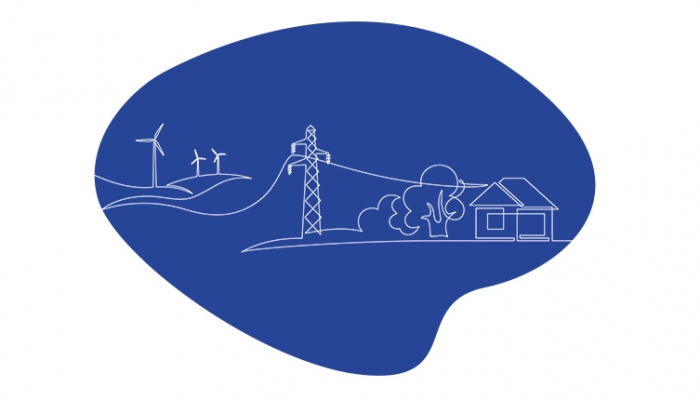What is in store for the energy sector this year?
Mid-2022 was a fraught time for the energy sector as Ofgem demanded companies do more to help customers struggling to pay their bills and keep their homes heated. Energy brands had to do better when it came to honouring their responsibilities to the public and communicating the support available.
With 2023 promising to be another financially-difficult year for many, here is insight on what is to come as well as how to plan and communicate clearly from industry experts Sherwood Power CEO Alex Hunter, SunGift Solar founder Gabriel Wondrausch and Williams Nicolson director Claire Foster.
Will supply/demand issues ease in 2023?
Not likely, says strategic communications and change management consultancy Williams Nicholson’s Claire Foster:
‘The pandemic put pressure on supply chains; logistic disruptions, and soaring energy prices have contributed to shortages and spiralling transport costs. Against this backdrop, the Russian invasion of Ukraine has exacerbated the situation adding additional pressure to the already unpredictable global trade landscape.
‘Globalisation, as we know it, is over. The frequency and severity of climate events persist and demand a survival strategy focused on autonomy, resiliency and risk management. A joined-up plan to cool a hot planet would benefit everyone, but leaders are more focused on their domestic territory right now.’
Sherwood Power is a renewable energy storage company that works with businesses to help them switch to renewable energies – its CEO Alex Hunter agrees that 2023 is going to be incredibly difficult for fuel and energy businesses:
‘The current issues with supply and demand are unlikely to change dramatically in the near future, and these are particularly difficult for fuel or energy-intensive businesses (such as manufacturing, data centres, delivery and logistics, etc.). Amid growing concerns about energy security and the ongoing rise in energy prices, we’re expecting to see more businesses make significant investments into renewable energy in 2023.’
Where things start to look more promising is increased public interest in sustainable and renewable energy… but this also comes with challenges:
‘From our perspective, we’re seeing that supply issues are easing,’ shares SunGift Solar’s Gabriel Wondrausch.
Experiencing an unprecedented surge in enquiries over the last year, the solar, storage and electric vehicle charger installer was hit by the challenges of supply and demand.
‘While certain components remain in short supply, the situation has certainly improved.
‘In fact, we’re currently deploying at our highest levels ever thanks to having an adaptive strategy in light of supply-related challenges.’
What do energy brand communicators need to know now?
‘It’s essential to keep clear lines of communication with customers from the outset, while clearly managing expectations from the first contact,’ advises Gabriel.
‘As a great deal of conflict can be avoided if people are prewarned as much as possible that there may be delays with their product or service.’
Alex advises action: ‘As investment in renewable energy becomes more common practice, companies that are not embracing renewables might find that they have to justify their inaction to their consumers – consumers that are increasingly concerned with both the rising cost of goods associated with fuel prices and the environmental impact of non-renewable energy.
‘We may also see more companies lending their voice to lobbying efforts, calling on Government to make it easier for businesses to invest in renewable energies, for example, by incentivising investment through tax breaks or access to low-cost finance schemes.’
On-going initiatives, incentives and goals are also advised by Claire Foster, co-author of The Williams Nicolson Trend Index:
‘Consider how your business can sustain success amidst a turbulent economy.’
‘Social impact encompasses long-term solutions and the overall longevity of your business. It is not necessary to reinvent the wheel, but a reassessment in production is needed as inflation and supply chain disruptions are expected to continue to rise’.
Key responsibilities for companies communicating change and possible risk to consumers?
Remember what is important to your business, says Gabriel:
‘Ongoing supply and demand issues have led us to go back to our mission statement and values.
‘We’ve remained customer-centric, inviting customers to partake in our survey to get an idea of how best we can improve our service in such challenging circumstances. This feedback has been taken forward and put into good, practical use in terms of improving procedures.
‘A few of the things we’ve prioritised with comms: working on our tone of voice, refining our customer journey, and being clear and concise in our communications. We’ve also established targets for response times to customers, in order to reassure them in the event of their installation being disrupted.’
‘The next two years will be painful so we must all play our part to make it a little less so for each other,’ adds Claire.
‘We don’t know what we don’t know. Companies must ask questions and share the answers.’
For more on the impact of the cost-of-living crisis on PR and communications, download our white paper ‘Communicating the cost-of-living crisis… A guide for charities and the third sector’.





Leave a Comment